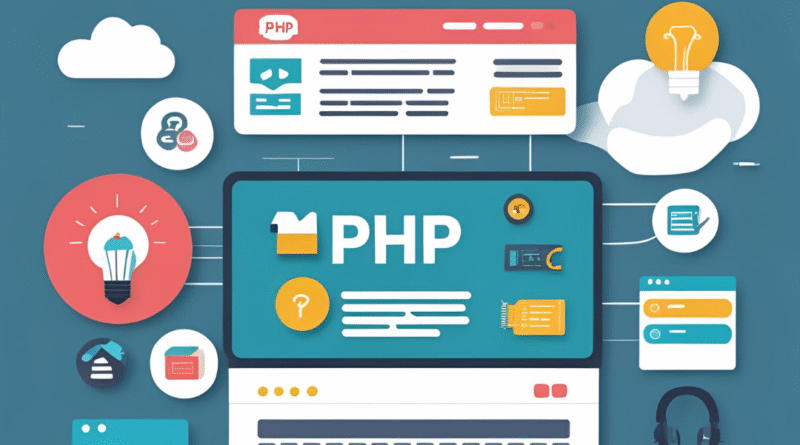PHP Frameworks:- Revolutionize Your Web Development: Why PHP Frameworks with MVC are a Game-Changer
Revolutionize Your Web Development: Why PHP Frameworks with MVC are a Game-Changer
In the dynamic world of web development, efficiency, scalability, and maintainability are paramount. For PHP developers, achieving these goals has been significantly streamlined by the advent of PHP frameworks built upon the Model-View-Controller (MVC) architectural pattern. If you’re looking to build robust, high-performance web applications, understanding and leveraging MVC-based PHP frameworks is no longer an option, it’s a necessity.
What is MVC Architecture? A Simple Breakdown
Imagine building a complex machine. You wouldn’t put all its parts in one messy pile, right? You’d separate them into logical groups, each with a specific function. That’s essentially what MVC does for your code:
- Model (M): The Data & Logic Hub. Think of the Model as the brain of your application. It’s responsible for managing the data, interacting with your database (like retrieving or saving information), and enforcing business rules. It doesn’t care how the data is displayed; it just ensures the data itself is accurate and consistent.
- View (V): The User’s Window. This is what your users actually see – the HTML, CSS, and any visual elements of your web page. The View’s sole purpose is to present the data it receives from the Model (via the Controller) in a user-friendly format. It has no knowledge of how the data is processed or stored.
- Controller (C): The Traffic Cop. The Controller acts as the intermediary. It receives user requests (like clicking a button or submitting a form), processes that input, decides which Model to interact with to get or update data, and then passes that data to the appropriate View for display. It’s the central coordinator, ensuring everything flows smoothly.
The Unbeatable Advantages of MVC in PHP Frameworks
So, why has this architectural pattern become the gold standard for modern PHP development? The benefits are numerous and impactful:
- Crystal Clear Code Organization (Separation of Concerns): This is the biggest win. By separating the data logic (Model), presentation (View), and application flow (Controller), your codebase becomes incredibly organized and easier to understand. This is a huge boon for team collaboration and project management.
- Faster Development Cycles (Rapid Application Development – RAD): With clear separation, multiple developers can work on different parts of the application simultaneously without stepping on each other’s toes. One developer can focus on the database (Model), another on the user interface (View), and a third on the core logic (Controller), drastically accelerating development time.
- Enhanced Maintainability and Debugging: When something goes wrong, it’s much easier to pinpoint the issue. A problem with data? Look at the Model. A display glitch? Check the View. A logic error? The Controller is your starting point. This modularity simplifies bug fixing and code updates, making your application more sustainable in the long run.
- Improved Scalability: As your web application grows, MVC makes it easier to scale. You can independently optimize or upgrade components without affecting the entire system. This ensures your application can handle increased traffic and new features seamlessly.
- Code Reusability: Models and Controllers, in particular, can often be reused across different parts of your application or even in entirely new projects. This reduces redundant coding and boosts development efficiency.
- Better Testability: The decoupled nature of MVC components makes unit testing significantly simpler and more effective. You can test each part of your application in isolation, leading to more reliable software and fewer errors in production.
- SEO-Friendly Development: Many PHP MVC frameworks inherently support clean, human-readable, and SEO-friendly URLs. This helps search engines crawl and index your website more effectively, improving your search engine rankings and organic traffic.
Popular PHP MVC Frameworks to Explore
The PHP ecosystem boasts several powerful and widely adopted MVC frameworks, each with its unique strengths:
- Laravel: Often considered the most popular PHP framework, Laravel offers an elegant syntax, a rich ecosystem of tools, and a fantastic developer experience. It’s excellent for building everything from small projects to large, complex enterprise applications.
- Symfony: A highly flexible and robust framework, Symfony is known for its modular components and excellent performance. It’s a favorite for large-scale, custom web development projects.
- CodeIgniter: Lightweight and incredibly easy to learn, CodeIgniter is a great choice for beginners or smaller projects where speed and simplicity are key.
- Yii: A high-performance framework emphasizing speed and security, Yii is ideal for developing large-scale web applications and APIs.
- CakePHP: One of the original PHP MVC frameworks, CakePHP promotes convention over configuration, allowing for rapid development with less boilerplate code.
The Future is MVC-Driven
In conclusion, adopting PHP frameworks with MVC architecture is a strategic move for any serious web developer or business aiming for robust, maintainable, and scalable online solutions. By embracing this powerful design pattern, you’re not just writing code; you’re building a foundation for future-proof web applications that can adapt and thrive in an ever-evolving digital landscape.
Keywords: PHP Frameworks, MVC Architecture, Web Development, Model-View-Controller, Laravel, Symfony, CodeIgniter, Yii, CakePHP, Software Architecture, Separation of Concerns, Rapid Application Development, Scalability, Maintainability, Code Reusability, Testability, SEO, High-Performance Web Applications, Custom Web Development, Enterprise Applications, Development Efficiency, Project Management, Team Collaboration, Bug Fixing, Code Updates, Reliable Software, Search Engine Rankings, Organic Traffic.



